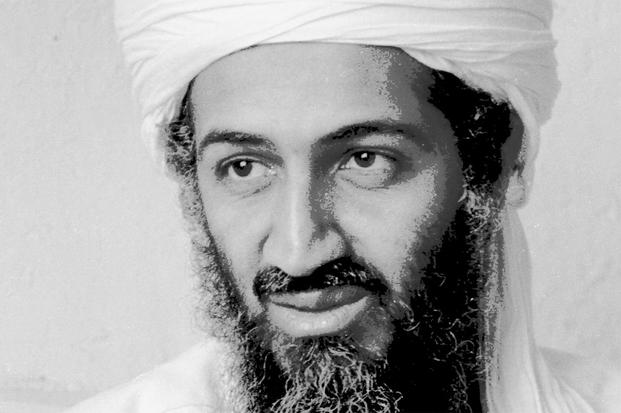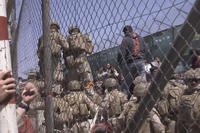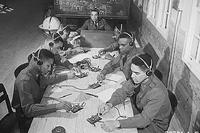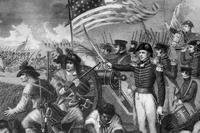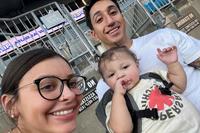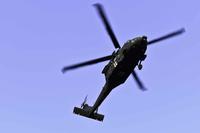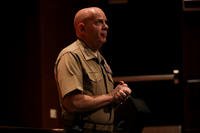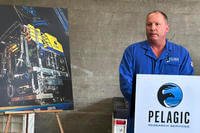“The American team engaged in a firefight. Osama bin Laden did resist.”
These words, uttered by a senior Pentagon official, summed up the now-historic raid on May 2, 2011, during which SEAL Team Six secretly descended upon a compound in Pakistan, blew down doors and engaged enemy combatants. The goal: kill or capture terrorist leader Osama bin Laden.
Gunfire was exchanged as SEALs made their way through the compound, up to the second and third floors, where bin Laden and his family were hiding. Four combatants and one woman used as a human shield were killed in the raid, according to Pentagon statements.
“The sole focus of the operation was to kill or capture Osama bin Laden,” a Defense Department official told reporters after the raid, during a background briefing.
As we recognize the anniversary of the raid, it would likely be an understatement to call it a “defining moment” in U.S. military history. With its successful completion, the operation ended the life of the man regarded as the mastermind behind the terror attacks of Sept. 11, 2001, which claimed thousands of lives.
Tracking Down Bin Laden
For years, military and intelligence forces had scoured the globe to find bin Laden’s hideout, and in September 2010, the CIA got the lead it needed when it used surveillance photos and intelligence reports to determine that a known al-Qaida courier was visiting a compound in Abbottabad, Pakistan.
Over the next few months, the CIA used informants, surveillance and other intelligence gathering measures to arrive at the conclusion that bin Laden and his family were hiding out in the compound – but up until the attack, there was no hard proof that bin Laden was present, only the best guess available.
President Barack Obama discussed the decision to attack with "60 Minutes" after the raid. “This was a very difficult decision, in part because the evidence we had was not absolutely conclusive,” he said.
Obama said he and his team were not surprised to find bin Laden hiding in plain sight, but were surprised to learn that the compound had been there for so long without information leaking out about it. “I think the image that bin Laden had tried to promote was that he was an ascetic, living in a cave,” Obama told "60 Minutes." “This guy was living in a million-dollar compound in a residential neighborhood.”
“It was the best intelligence work I’ve ever seen that enabled those in the military who executed this mission to do so successfully,” former Joint Chiefs of Staff Adm. Mike Mullen told a DoD reporter. “There was only a 55% chance that the 9/11 attack mastermind was in the compound.”
Neptune Spear
The actual raid on bin Laden’s compound was called Operation Neptune Spear, after the trident that appears on the U.S. Navy's Special Warfare insignia. On the night of the infiltration, two dozen SEALs flew in using two helicopters, beneath the radar and varying routes to avoid detection.
News reports described bin Laden’s compound as surrounded with barbed wire and 18-foot walls. There were also seven-foot walls surrounding the balconies. Additionally, the compound was designed to obscure lines of sight from multiple directions. As the raid commenced, the tail of one of the helicopters grazed the compound wall, forcing it into a “soft crash” landing that fortunately did not result in major injuries, although the helicopter itself had to be destroyed so none of its tech would fall into the wrong hands.
Using night-vision goggles (power on the street had been cut off), the SEALs infiltrated the compound, killing anyone who put up resistance, securing the women and children, clearing weapons stashes and barricades, and taking anything that could contain secret information, including hard drives and cell phones. The SEALs quickly made their way up to the third floor, where they found the terrorist leader in his bedroom and killed him. Accounts of how this happened differ, depending on the source. SEAL Robert O’Neill has claimed to be the “SEAL who shot bin Laden”. SEAL Matt Bissonnette, who entered the room at the same time and wrote about the operation in the book "No Easy Day," also claims to have fired shots into bin Laden's fallen body.
In any case, there was no doubt about the outcome of the mission when the SEAL team leader radioed in, "For God and country -- Geronimo, Geronimo, Geronimo," thus declaring the raid a success.
At the conclusion of the raid, the SEALs evacuated the area with bin Laden’s body, with an extra Chinook helicopter flown in to provide transportation. From beginning to end, the operation had taken less than 40 minutes.
Using known photos and facial recognition software, as well as measuring the corpse, CIA specialists determined with 95% certainty that the body was that of Osama bin Laden. Other specialists in the intelligence community performed initial DNA analysis, which resulted in a virtual 100% DNA match of the body against DNA of several bin Laden family members. Bin Laden was buried at sea.
“For us to be able to definitively say, ‘We got the man who caused thousands of deaths here in the United States and who had been the rallying point for a violent extremist jihad around the world’ was something that I think all of us were profoundly grateful to be a part of,” Obama said at the time.
Want to Know More About the Military?
Be sure to get the latest news about the U.S. military, as well as critical info about how to join and all the benefits of service. Subscribe to Military.com and receive customized updates delivered straight to your inbox.

